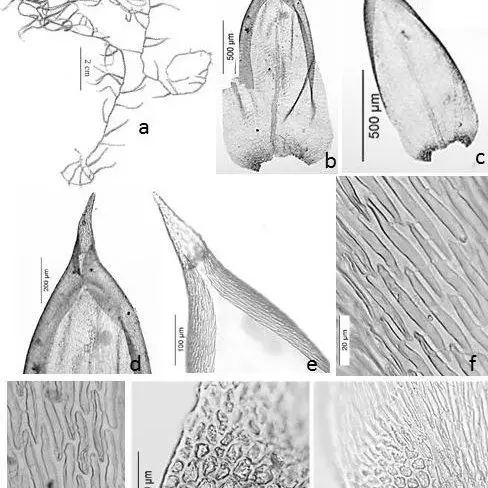Unveiling the Secrets of Orthostichopsis Moss: A Captivating Journey
Affiliate Disclaimer: As an affiliate, we may earn a small commission when you make a purchase from any of the links on this page at no additional cost to you!

Figura-7-Orthostichopsis-tenuis-A-Jaeger-Broth-a-Habito-b-Filidio-do-caulidio_Q640.jpg from: https://www.researchgate.net/publication/309232610_PTEROBRYACEAE_KINDB_BRYOPHYTA_NO_BRASIL
Exploring the Fascinating World of Orthostichopsis tortipilis Moss
Introduction
Have you ever stopped to admire the tiny, intricate plants growing on trees and rocks? There’s a good chance some of those miniature marvels are mosses. Today, we’re going to take a closer look at one particularly interesting species: Orthostichopsis tortipilis (Müll.Hal.) Broth., commonly known as Orthostichopsis moss. This unique plant may be small, but it has some big surprises in store!
Background on Mosses
Before we dive into the details of O. tortipilis, let’s review some moss basics. Mosses are non-vascular plants in the division Bryophyta. Unlike other plants, they lack true roots, stems, and leaves. Instead, they have root-like rhizoids, stem-like structures called seta, and leaf-like phyllids. Mosses reproduce via spores rather than seeds and are found in diverse habitats worldwide.
Morphology and Identification
Orthostichopsis tortipilis is a pleurocarpous moss, meaning it has a branching, creeping growth form. Its scientific name comes from the Greek words orthos (straight), stichos (row), opsis (appearance), and the Latin tortilis (twisted), referring to the straight rows of twisted leaves. The phyllids are lanceolate to ovate-lanceolate, often falcate or secund, and have a strong costa. Capsules are cylindrical and curved, borne on elongated seta.
Global Distribution and Habitat
This species is widely distributed in tropical and subtropical regions of the Americas, Africa, and Asia. It typically grows as an epiphyte on tree trunks and branches in humid forests, but can also be found on rocks and logs. In the Neotropics, it often forms extensive pendent mats in cloud forests and montane rainforests.
Ecological Roles and Adaptations
Like other mosses, O. tortipilis plays important roles in its ecosystem:
- Moisture retention: Its mat-forming growth traps and holds water, helping maintain humidity in the forest understory.
- Nutrient cycling: It accumulates nutrients from the atmosphere and canopy throughfall, later releasing them back to the ecosystem.
- Microhabitats: The mats provide shelter and foraging grounds for countless invertebrates and other organisms.
To thrive as an epiphyte, O. tortipilis has special adaptations:
- Poikilohydry: It can tolerate drying out and quickly resume photosynthesis when moisture is available again.
- Rhizoids: Root-like structures help it adhere tightly to bark and other substrates.
- Leaf morphology: The twisted, overlapping leaves may aid in water retention and increase surface area for gas exchange.
Conclusion
From its eye-catching appearance to its fascinating ecology, Orthostichopsis tortipilis is a true wonder of the plant kingdom. Next time you’re in a tropical forest, take a moment to appreciate the complex world of epiphytic mosses – you might just spot an Orthostichopsis! What other secrets do you think these tiny plants hold?
